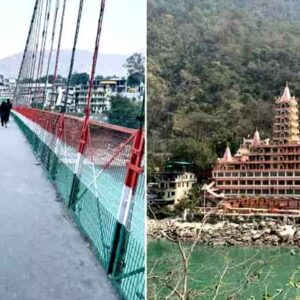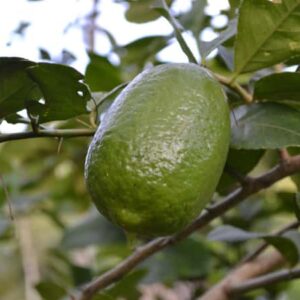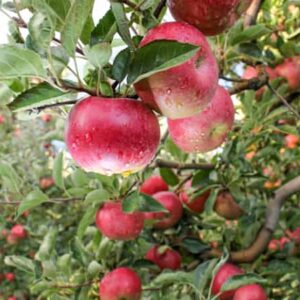Situated in the Indian state of Sikkim, North Sikkim is a place of beauty in our ‘ Incredible India‘. The headquarter of this district is Mangan. Among the states of the Indian subcontinent, North Sikkim is the seventh least populated district. The flora and fauna of the region attract people all over the world. The mountainous region soothes the eyes of the people who visit the place. Nature here gives us a type of pleasure from our day-to-day hectic life.
Elevation and Boundaries of North Sikkim:
The normal elevation of North Sikkim is 610m or 2000ft, with a population of forty-four thousand people. The density of the population is 27/ sq mt. The district headquarter of Mangan is about 2000 ft above sea level.
The mountainous landscape with dense forests can be seen here. Firstly, the Alpine forest can be seen which ends in the Northern Tundra. Several waterfalls can be observed on the way. Landslides are occurred at times. During the rainy season, it is dangerous to travel in this way. Due to the elevation of the mountain, the vegetation is turning from Temperate to Alpine to Tundra. Oak, Laurel, Maple, Chestnut, Magnolia, Arden, Berch, Rhododendron, Fir, etc. are some important trees of this region.
The eastern border of North Sikkim is consisting of Kanchenjunga, which is the eastern border with Nepal. The height of the peak is about 8000m and you can get a clear view of the peak from Singhik town. The Singalila range is in the west which separates Sikkim from Nepal. To the east Dongkya range forms the border with the Tibet Autonomous Region of China.
Flora and fauna: The Red Panda, a vulnerable species can be seen in North Sikkim, which is also called the ‘state animal’ of this place. The Pandas are consisting of red fur, black eyes, and a white back and chest. It also has bushy tails with black or brown. The house of the Pandas is on the treetops.
Kanchenjunga National Park is situated here which is also a part of West Sikkim District. In 1984 another sanctuary named Singba (rhododendron) Wildlife Sanctuary was established here with an area of forty-three square kilometers.
Economical Side of North Sikkim:
A large variety of cardamom is grown in North Sikkim. For that reason, Mangan is called the ‘Cardamom Capital of the World’. This area has numerous numbers of Hydro-Electric Power Projects due to its steep slopes and several lakes or waterfalls.
In 2006 North Sikkim is mentioned as one of the most backward districts in the country, which is now receiving grants from the Backward Region Grant Fund Program (BRGF).
Most of the regions of North Sikkim are restricted for tourists and a permit is needed to enter there, as the area shares its border with the People’s Republic of China. The Indian Army patrolled the place heavily because of its sensitivity. Despite it, a large number of tourists are coming here by overcoming all the hardships.
Demographics of North Sikkim:
The population of this place is forty-four thousand with a sex ratio of 769 females against 1000 males. The literacy rate is 78%. The language of North Sikkim includes Lepcha, Nepalese, Sikkimese, Limbu, Hindi, Sherpa, Tamang, Punjabi, Bengali, and Urdu.
Best Time to Visit Sikkim:
The temperature is moderate here which is about 28 to 30 degrees during Summer. Cold weather prevails in this area. From July to September, this area experiences heavy rainfall which sometimes causes landslides. In wintertime, the region has very harsh weather, which sometimes comes down to sub-zero. So during the summertime, it is advisable to visit North Sikkim but not in winter or the rainy season. Last but not least the traveler will be the decider the time of exploring the spectacular place.
There are different types of packages for the North Sikkim tour. A trip of five nights and six days will be a perfect one. Bike trips are also available there.
Glorious Past of Sikkim:
The name Sikkim is derived from the Limbu words su him’ which means a new house. The Lepchas are the predominant race of this region. In the 14th century, the Bhutias began to enter this area. The Kingdom of Sikkim was established in 1642 with Phuntsong Namgyal as its first Chogyal which means the temporal and spiritual king. Till 1975, Namgyal Dynasty ruled Sikkim. Darjeeling was captured by the British from Sikkim in 1835. With the Anglo- Sikkimese treaty of 1861 Sikkim became a princely state under the British. After 1947 different types efforts were made to abolish feudalism. The Feudal System was abolished in 1949 and 1950 through the Indo- Sikkimese treaty, Sikkim became a protectorate of India. In 1975, a special referendum was held by which more than 97% of people voted to be merged with India. It included as an independent state (22nd) of India in 1975.
Cultural Beauty:
Tibetian influence is shown in the cultural life of North Sikkim. They follow pre-Buddhist customs. PhangIhapsol is the most important festival which is held for two days during August or September. The Namgyal Institute of Tibetology in Gangtok has the largest collection of Tibetan books. Wall paintings or thangkas, bronze images, and other artworks can be seen in North Sikkim which is a part of ‘Incredible India‘.
A Picture of Daily Life:
Lepcha, Nepalese, and Bhutia are three dominant ethnic groups in North Sikkim. The Sikkimese people are extremely warm, well-behaved, mannered, and warm-hearted too. They welcome people all over the world. As they are very much simple and warm-hearted, tourism has become the main source of income.
Woolen clothes like thermal inner wear, muffler, gloves, and jackets are worn by the Sikkimese people. Shoes are a must here for the harsh cold weather. Baku and Kho are worn by men and women as the traditional dress of the Bhutia tribe. Thokro – Dum is the priority outfit of the Lepcha tribe. Yanthatse, a type of Lepcha t-shirt, and Shampo, a traditional cap worn in North Sikkim. Thyaktuk is another type of cap worn here.
Must-Visit Places of North Sikkim:
In North Sikkim lots of are there to visit. The ethnic beauty of the places will enchant you. Gangtok, the capital city of Sikkim, is the base city from where you have to start the trip to North Sikkim. The trip will be breathtaking through the warm hospitality of the local people. The old Monasteries with the serenity and peacefulness will give you an amazing feeling. It is an ideal place for nature lovers. The trekkers and adventure lovers can find their proper destination here. The mountains, valleys, and forests will soothe your body and soul.
Lachen:
A mountainous and picturesque village of North Sikkim is situated at an altitude of 8500 feet and is 107 km away from Gangtok. It is the base camp of trekkers and a place where the mind will be alluring which is very hard to find anywhere. The simplicity of the people of this mountainous village will freshen your mind.
Lachung:
Another spectacular village of North Sikkim with amazing waterfalls. It is the base camp for the people who are going to visit Yumthang valley. The orchard of various fruit trees can be seen here. In the local market, you will get the different types of exquisite handwoven clothes along with other souvenirs at an affordable price.
Yamthang Valley:
The valley is decorated by nature in the Northern region of Sikkim. It is also known as the valley of flowers. In the Rhododendron forest, hot sulfur springs will refresh your mind. The river Teesta with lots of flowers on its bank makes the place a spectacular one. The pristine waterfalls and streams with a magnetic view of mountains will make your tour a memorable one.
Gurudongmar Lake:
The altitudinal height of this lake is around 17100 ft. The landscape is breathtaking and will bring peace and tranquillity of mind. The lake has a significant religious value to the people of the Buddhist religion. The water of the lake remains frozen during winter but in summer it has crystal clear water.
Chungthang:
Between the convergence of the Lachen and Lachung rivers, the place is situated. It is also a place of the Buddhist faith. It is said that Guru Padmasambhava took a rest in this village on his way to Tibet and left his footprints on a rock. According to Sikhism, Guru Nanakji also visited this place on his way to Tibet and put his stick under a pious tree. The dense greenery and the confluence of the river will mesmerize your soul and mind.
Cholamu Lake:
The highest lake in India is situated in North Sikkim with an altitude of 18,000 feet from sea level.
Thangu Valley:
It is a small town with an altitude of 13,000 ft which is used as the base point by tourists to visit some important places of North Sikkim.
Chopta Valley:
This valley is known for its natural beauty but is an isolated one. The valley contains a variety of flora and fauna and also an exquisite view of the mountains.
Mt. Katao:
It is a perfect destination for adventure lovers who like different types of adventure sports during winter. The splendid view of the mountains is another attraction of this place. It is based in Northern Sikkim. The distance from Gangtok to this place is 144 km.
Homestays and Car Service:
There are lots of homestays in Sikkim which are spectacular and eco-friendly. The rooms are well maintained with proper privacy. The mountains are visible from all of them. The most important thing is that in the homestays the owners are also there with their families. In homestays the breakfast is complimentary.
To have a nice journey around Sikkim, well-sanitized cars are available with well-experienced drivers who can be your guide too. Cabs are pocket friendly and very much accessible on that route. You can book your car on your way.
How to Reach North Sikkim:
We can reach Sikkim by air, train, or by roadways. The nearest airport is Bagdogra which is well connected with Delhi and Kolkata. Through roadways you have to reach Siliguri, from there you would access your destination. On railways, New Jalpaiguri is the nearest station from Kolkata and Delhi. But on every journey travel on roadways is a must.
Without visiting North Sikkim your journey to explore ‘Incredible India‘ will be incomplete. To soothe your mind and soul, have a trip like that of a tour like North Sikkim, which will be a memorable one all through your life.



